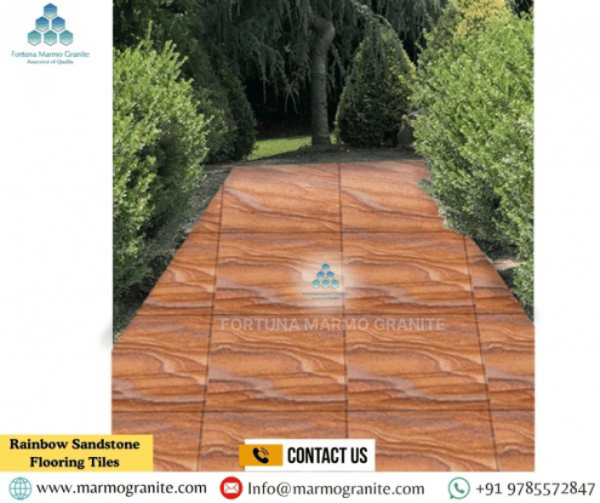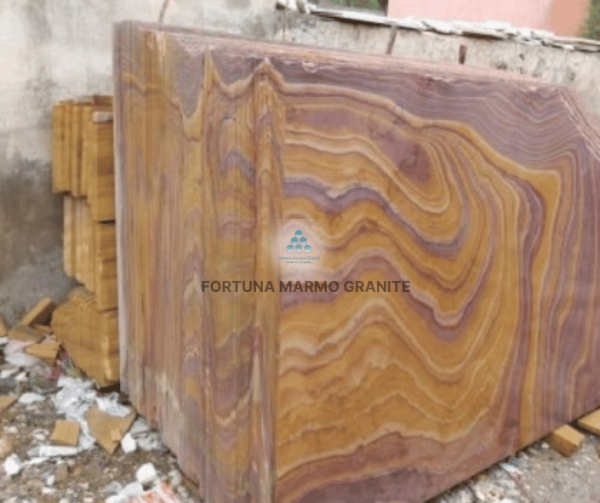Rainbow Sandstone: A Natural Work of Art for Flooring, Walls, and More
Rainbow Sandstone Supplier In the realm of natural stones, few materials can match the visual appeal and versatility of Rainbow Sandstone. As the name suggests, this variety is renowned for its vibrant multicolored patterns, which resemble artistic brushstrokes. Consequently, it is a preferred choice for architects, designers, and homeowners seeking to bring nature's artistry into their spaces. From flooring to wall cladding, and even decorative elements, Rainbow Sandstone blends durability with unmatched aesthetics.
Beyond its visual appeal, Rainbow Sandstone offers several practical benefits. It is slip-resistant, easy to maintain, and ages gracefully, making it ideal for high-traffic areas. Whether designing a rustic outdoor patio, an elegant indoor accent wall, or a stylish garden pathway, this stone adapts effortlessly to diverse settings.
In this blog, we explore the distinctive characteristics of Rainbow Sandstone, its varied applications in flooring and wall cladding, and the compelling reasons why it remains a sought-after choice in architectural and design projects.


Applications of Rainbow Sandstone
- Flooring
Moreover, Rainbow Sandstone is an excellent choice for flooring due to its durability and non-slip surface. It can be used in both residential and commercial spaces to create a striking ambiance.
- Indoor Flooring: In addition, Its warm, earthy tones add character to living rooms, hallways, and even kitchens. The natural patterns lend a rustic yet sophisticated look to interiors.
- Outdoor Flooring: In contrast, Given its ability to withstand harsh weather conditions, Rainbow Sandstone is widely used for patios, garden pathways, and pool decks. Its natural surface texture ensures safety even in wet conditions.
- Wall Cladding
For those looking to make a statement with their walls, Rainbow Sandstone is a perfect choice. The vivid hues and patterns can transform plain walls into captivating focal points.
- Interior Walls: Used in living rooms, feature walls, and fireplaces, Rainbow Sandstone adds a sense of warmth and elegance.
- Exterior Walls: Its resistance to weathering makes it ideal for facades, boundary walls, and outdoor pillars, where it enhances the aesthetic appeal of a property.
- Countertops and Vanities
Moreover, Rainbow Sandstone is increasingly being used for countertops in kitchens and bathrooms. Its distinct patterns provide a natural yet luxurious feel, complementing both modern and traditional designs.
- Decorative Elements
Consequently, Beyond structural applications, Rainbow Sandstone is used in various decorative elements such as garden sculptures, fountains, and tabletops. These installations highlight the stone's natural beauty and enhance outdoor spaces.
Why Choose Rainbow Sandstone?
- Aesthetic Appeal
The rich and varied color patterns of Rainbow Sandstone make it one of the most visually striking natural stones. Its artistic appearance adds charm to any space, making it a preferred choice for premium architectural projects.
- Durability and Strength
In addition, Rainbow Sandstone is highly durable, resistant to weathering, and capable of withstanding heavy foot traffic. These qualities make it ideal for both indoor and outdoor use.
- Low Maintenance
Consequently, This sandstone is relatively easy to maintain. Regular cleaning with mild soap and water is sufficient to preserve its natural beauty. Additionally, sealing the stone enhances its longevity and protects it from stains and moisture absorption.
- Eco-Friendly Choice
For instance, As a natural stone, Rainbow Sandstone is an environmentally friendly building material. It does not require extensive manufacturing processes and is fully recyclable, making it a sustainable choice for eco-conscious projects.
Installation and Maintenance Tips
Installation Tips:
- Ensure a strong and level substrate before laying Rainbow Sandstone flooring.
- Use high-quality adhesives and grouts suitable for natural stone to prevent movement and cracks.
- For outdoor applications, consider sealing the stone to enhance its resistance to moisture and environmental elements.
Maintenance Guidelines:
- Clean the surface regularly with a soft brush or damp cloth.
- Avoid using acidic or harsh chemical cleaners, as they may damage the stone's natural texture.
- Apply a sealant periodically to maintain its luster and protect it from stains and spills.

